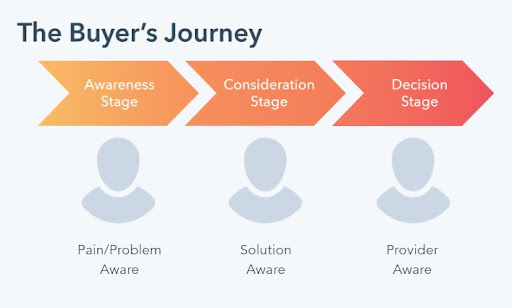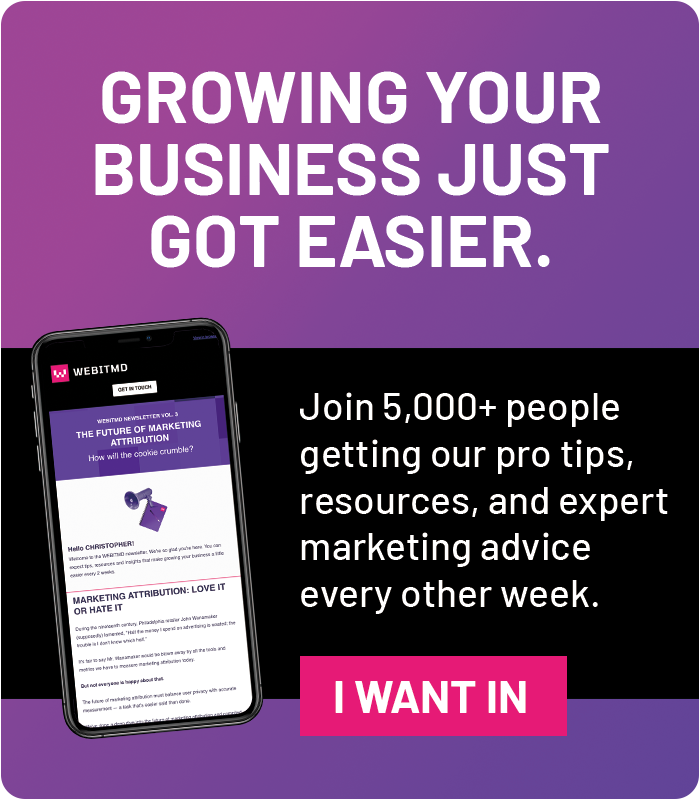Marketing automation has long been a staple tool for marketers to maximize and scale their efforts. Whether it’s subscribing to a blog or purchasing something online, all websites enlist one form of automation or another to run the business efficiently. In fact, according to HubSpot, of those automating marketing, 23% are automating their content delivery. So while we have yet to see a robot apocalypse, bots are all around us, sending text messages, confirmation emails, and routing live chats to the right person. So not apocalyptic — just way more convenient with less burning buildings.
There are still many who have yet to fully implement marketing automation to its fullest potential. That’s what I’m here for! We’ll be covering some best practices to get started and continue to build upon your automation strategy over time.
Types of Marketing Automation
- Email automation: the most common type, this automation sends emails based on a designated time or action. Think birthday emails, abandoned cart emails, or even a content offer that’s emailed after someone fills out a form for a whitepaper.
- Social media automation: HubSpot lets you schedule social media posts ahead of time and monitor any mentions across your channels.
- SMS automation: also called mobile marketing, you can automate text messages that are sent for sales and special offers. These tend to get a high response rate since most people always have their smartphones within reach.
Know Your Audience
A golden rule of writing and marketing alike, you must grasp your customers’ behaviors and motivations before communicating with them, much less leaving a bot to do so. You need to know their goals as a buyer, what their common pain points are, as well as how your product or service fits into that.
Often referred to as a buyer persona, or a semi-fictional representation of your ideal customer, you’ll want to tap into what their job title might be, influence and buying power within their company, as well as what’s important to them. If you’re emailing a C-suite executive, for example, you’ll want to speak in big picture terms that drive revenue versus a Marketing Manager, who may want more details about how your product or service will improve day-to-day operations. How you nurture those leads will also be different, so keep that in mind before you set any automation live.
Align Content to the Buyer’s Journey
Without strong content, you’ll lack a foundation to successfully continue converting leads. Although I am biased as a writer, content is the basis of everything you relay to customers and prospects, so you’ll want to focus on what you have and fit it into your larger strategy of how you’ll reach leads. Then, and only then, will your automation give you the capability to scale successfully!
This is the difference between someone coming to your website for the first time vs abandoning a cart with items. One is more in the awareness stage of arriving at your site with their problem in mind (needing new clothes!) vs the consideration and decision stage (picking clothes and purchasing them). Think about how you’d handle it as if you were making the decision and weighing options. Automation is meant to be a guiding tool — so if anything you’re doing feels too aggressive or like it’s not relevant to your personas, reconsider and audit your pieces in order to figure out where there are gaps.
Test and Adjust Regularly
At the rate things are constantly changing, even automation isn’t a permanent “set it and forget it” operation. Once you’ve set up a workflow, make a note to analyze it on a quarterly basis to monitor progress. What’s working and what isn’t? Your business is always going to be evolving based on your customers, products, sales, and events going on in the world. The expectation is for businesses to always be proactive and communicate their goals and intent.
HubSpot makes it simple to check your workflows and the necessary analytics. Don’t be afraid to analyze, change something like the subject line or when the email gets sent, and then check it again at a later date. Automation is meant to be a lifelong “progress, not perfection” piece to your toolkit. Change is meant to happen regularly, so be prepared as a best practice to pivot as your business does.
Automation at Your Fingertips
Automation will undoubtedly save you time, resources, and effort in the long run — even if it feels painstaking at first to set up. You’ll find enlisting more automation over time serves as a powerful tool in your arsenal to streamline communication and boost your daily efforts and output.
To learn more about how you can optimize marketing automation in your business, feel free to subscribe to our blog or download our free growth stack guide!






.jpg)



.jpg)





![5 Reports to Elevate Your HubSpot Sales Dashboard [+ Examples]](https://blog.webitmd.com/hs-fs/hubfs/Imported_Blog_Media/6-winning-examples-of-a-hubspot-sales-dashboard-2.png?width=767&name=6-winning-examples-of-a-hubspot-sales-dashboard-2.png)